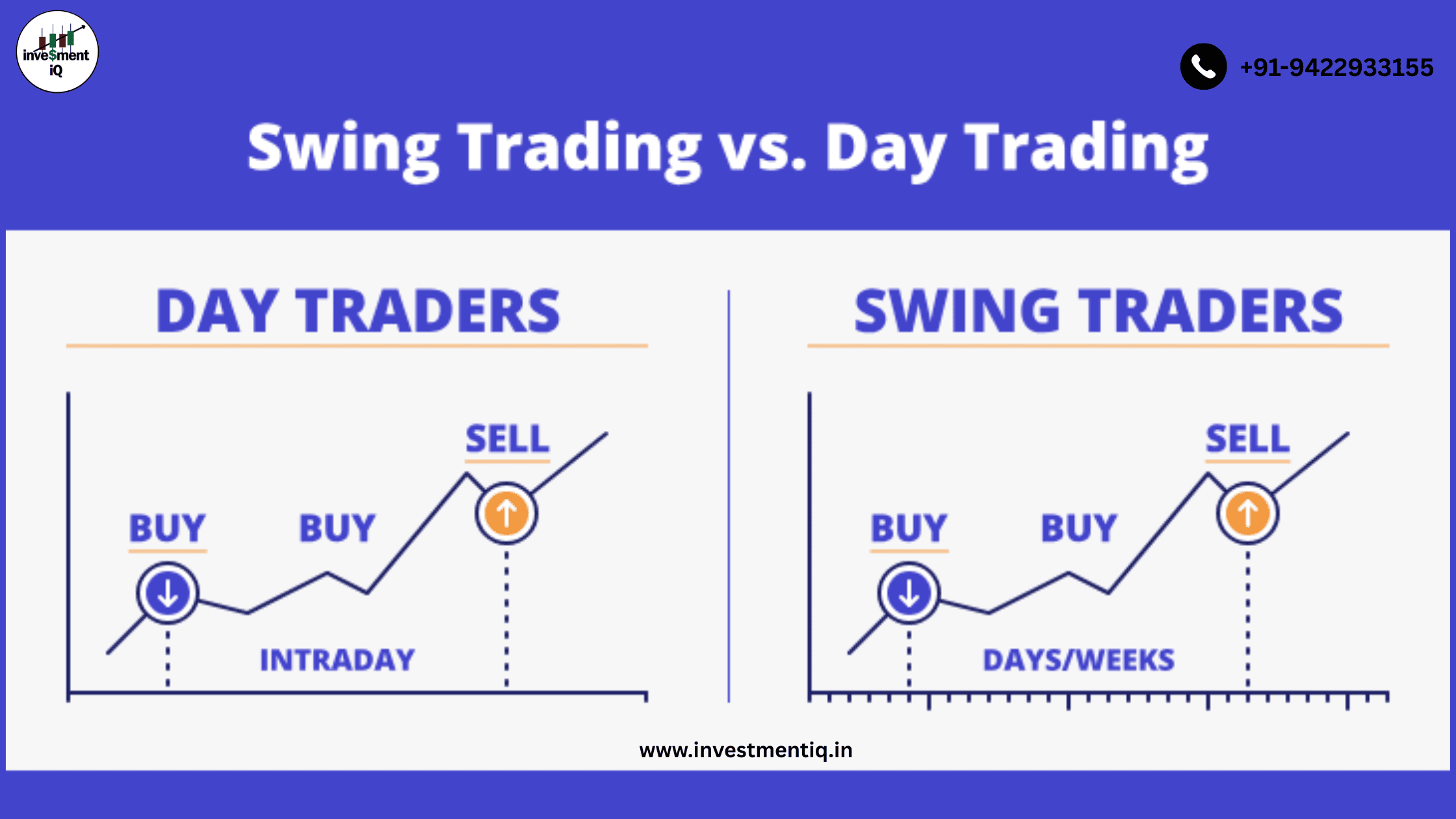Swing vs. Day Trading
Swing Trading vs. Day Trading: Which One Is Right for You?
Introduction
Both strategies are exciting. They help traders profit from market moves. But they suit different styles and risk levels. If you’re an employee wanting to invest or a beginner in trading, knowing these two methods is key.
This guide will explain the basics, key differences, and how to pick a strategy that fits your goals. By the end, you’ll have a clear roadmap to start your trading journey with confidence!
Understanding swing trading and day trading
Before deciding which style suits you best, let’s define what each strategy entails.
What is swing trading?
Swing trading focuses on capturing short- to medium-term market trends. Traders keep their positions for days or weeks. They aim to profit from price changes during that time.
Key Features of Swing Trading:
- Someone holds positions for days or weeks.
- Less frequent trading compared to day trading.
- Uses technical and fundamental analysis to identify trends.
- Best suited for individuals who cannot check the market all day.
Example: Imagine a stock is trending upward due to strong earnings. A swing trader might buy the stock at ₹500 and hold it for a week, selling at ₹550 when the price increases.
What is day trading?
Day trading is a more aggressive approach where traders buy and sell stocks within the same day. Traders do not hold positions overnight. They aim to profit from quick, small price changes.
Key Features of Day Trading:
- Traders close positions before the market closes each day.
- Requires continuous market monitoring.
- It relies heavily on technical analysis and charts.
- Higher potential for quick profits, but also higher risks.
Example: A day trader notices a stock fluctuating between ₹200 and ₹210 in a single day. They buy at ₹202 and sell at ₹208, making a profit in a few hours.
Key Differences Between Swing Trading and Day Trading
Aspect
- Swing Trading
- Time Commitment: Part-time (a few hours a day)
- Risk Level: Moderate
- Potential Returns: Medium to high
- Required skills: basic technical and fundamental analysis.
- Best for: Employees, part-time traders
- Day Trading
- Time Commitment: Full-time (constant monitoring)
- Risk Level: High
- Potential Returns: High, but variable.
- Required Skills: Advanced technical analysis and fast decision-making.
- Best for: Full-time traders, risk-takers
How to Choose the Right Trading Style for You
Here’s a simple approach to deciding which method suits you best:
Choose Swing Trading if you have a day job that limits your ability to check the market often. You prefer lower stress and less frequent trades. You’re willing to wait days or weeks for profits.
Choose day trading if you can dedicate full-time hours to the market. You enjoy fast-paced decision-making. You have the capital to manage potential losses.
Practical Tips for Getting Started
Whether you choose swing trading or day trading, here are some key tips to help you succeed:
1. Start small: Avoid risking large amounts in the beginning. Use a demo account or trade with minimal capital.
2. Master Technical Analysis: Understand candlestick patterns, support and resistance levels, and moving averages.
3. Set Realistic Goals: Trading is not a get-rich-quick scheme. Focus on consistent profits over time.
4. Manage Your Risk: Never risk more than 2% of your trading capital on a single trade.
5. Keep Learning: The stock market is dynamic. Read books, take online courses, and follow experienced traders to improve your skills.
Conclusion
Swing trading and day trading can help you grow your finances. But both need discipline, strategy, and ongoing learning. If you’re starting, swing trading might be a safer and more manageable approach. If you’re open to more risk and want to engage with the market, day trading might be a great option.
you may be interested in this blog here:




